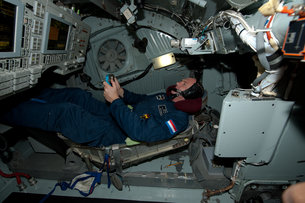Unternehmensdemokratie oder Gemeinwohlökonomie?
Die Globalisierung der Finanzmärkte und die weltwirtschaftlichen Entwicklungen, die ab den 1990er Jahren mit Einführung der WTO zu einer Liberalisierung des Weltmarktes führten, haben in den letzten Jahren eine Diskussion über alternative Wirtschaftsmodelle verstärkt. Parallel dazu entwickelte sich eine Widerstandsbewegung, die sich in sozialen Netzwerken und Protestbewegungen organisiert und breite Aufmerksamkeit erfährt. Von Globalisierungskritikern wie ATTAC und Occupy Wallstreet über Gewerkschaften bis hin zu religiösen Bewegungen gibt es viele Akteure, die den vorherrschenden ökonomischen Verhältnissen ablehnend gegenüberstehen. Der deutsche Politologe Claus Leggewie unterscheidet fünf Typen der Globalisierungskritik: Basisbewegungen aus PazifistInnen, FeministInnen und UmweltschützerInnen, die das Motto „Eine andere Welt ist möglich“ propagieren, „Insider“, zu denen er prominente Ökonomen wie Joseph Stiglitz zählt, eine akademische Linksbewegung, die gegen neoliberale Prinzipien auftritt, sozialreformerische Kirchen sowie rechtsextreme und nationalistisch/faschistische Strömungen (vgl. Leggewie 2003). Die Alternativen, die aus diesen Gruppen zur vorherrschenden Weltwirtschaft angeboten werden, sind unterschiedlich in Hinblick auf ihre Qualität, ihre Konzeptualisierung und ihre Darstellung. Im folgenden sollen zwei, auch betriebswirtschaftlich relevante Modelle etwas genauer beleuchtet werden: jenes der Gemeinwohlökonomie und jenes der Unternehmensdemokratie.Gemeinwohlökonomie:
Die internationale Bewegung ATTAC, die ihren Namen von der französischen Association pour une Taxation des Transactions financières pour l’Aide aux Citoyens bezieht und in Leggewies Kategorisierung am ehesten den Basisbewegungen zuzurechnen ist, setzt sich laut ihrer Website für „eine demokratische und sozial gerechte Gestaltung der globalen Wirtschaft“ ein. Neben Veränderungen volkswirtschaftlicher und politischer Rahmenbedingungen wird von ATTAC-Austria-Mitbegründer Christian Felber das Modell der Gemeinwohlökonomie forciert, in welchem Betriebe nicht nach dem Prinzip der Konkurrenz, sondern nach jenem der Kooperation agieren und somit dem „Gemeinwohl“ dienen sollen. Dieses Gemeinwohl wird abgesehen von Schlagworten wie Wertschätzung, Teilen, Solidarität nicht näher definiert. Felber schlägt aber 20 Punkte vor, die zur Verwirklichung einer Gemeinwohlökonomie beitragen sollen, darunter der folgende:
„3. Wirtschaftlicher Erfolg wird nicht länger mit (monetären) Tauschwertindikatoren gemessen, sondern mit (nichtmonetären) Nutzwertindikatoren. Auf der Makroebene (Volkswirtschaft) wird das BIP als Erfolgsindikator vom Gemeinwohl-Produkt abgelöst, auf der Mikroebene (Unternehmen) die Finanz-Bilanz von der Gemeinwohl-Bilanz. Diese wird zur Hauptbilanz aller Unternehmen. Je sozialer, ökologischer, demokratischer und solidarischer Unternehmen agieren und sich organisieren, desto bessere Bilanzergebnisse erreichen sie. Je besser die Gemeinwohl-Bilanz-Ergebnisse der Unternehmen in einer Volkswirtschaft sind, desto größer ist das Gemeinwohl-Produkt.“ (http://www.gemeinwohl-oekonomie.org/de/content/ein-wirtschaftsmodell-mit-zukunft)
Weitere Vorschläge bestehen darin, die Mitspracherechte der MitarbeiterInnen und der Öffentlichkeit an größeren Unternehmen zu stärken:
„9. Bei Großunternehmen gehen ab einer bestimmten Größe (zum Beispiel 250 Beschäftigte) Stimmrechte und Eigentum teil- und schrittweise an die Beschäftigten und die Allgemeinheit über. Die Öffentlichkeit könnte durch direkt gewählte „regionale Wirtschaftsparlamente“ vertreten werden. Die Regierung soll keinen Zugriff/kein Stimmrecht in öffentlichen Unternehmen haben.“ (http://www.gemeinwohl-oekonomie.org/de/content/ein-wirtschaftsmodell-mit-zukunft)
In den anderen Punkten wird u. a. auf Einkommensgrenzen, auf eine Reduktion der Wochenarbeitszeit, auf partizipative Demokratiemodelle, auf ökologische Nachhaltigkeit, auf ein notwendig einzuführendes UN-Abkommen sowie auf eine europäische Gemeinwohlzone abgezielt. Unabhängig davon, dass die meisten dieser Vorschläge nicht weiter operationalisiert werden und auch wissenschaftlich nicht sonderlich fundiert sind, widersprechen sie sich teilweise. So gibt es etwa eine Reihe von möglichen Konflikten zwischen sozialen und ökologischen Zielen (man denke nur an die Schaffung von Arbeitsplätzen in einer nicht-ökologischen Industrie) und nicht zuletzt auch so genannte grüne Konflikte (z. B. zwischen Tierschützern und Windkraftbetreibern). Welcher Position in dieser Konkurrenz um Argumente dann jeweils der Vorzug gegeben werden soll, bleibt offen.
Die Annahme, man könne soziale und ökologische Nachhaltigkeit gleichermaßen maximieren, widerspricht historischen und gegenwärtigen Realitäten. Ein Grundproblem besteht in der Verwendung des Begriffes „Gemeinwohl“, der bei Felber unabhängig von einer langen und sehr ausdifferenzierten politik-philosophischen Diskussion als Allgemeinplatz eingeführt wird. Grundsätzlich gibt es zwei Möglichkeiten einer Gemeinwohldefinition, nämlich einerseits die einer normativen Setzung von etwas, was gut ist und was allen Mitgliedern einer Gesellschaft wohl tut (z. B. Friede oder Gerechtigkeit), und andererseits die einer Minimalübereinkunft über Spielregeln, um unterschiedliche Interessen auszuhandeln (z. B. die Spielregel, dass alle Entscheidungen durch die Stimmenmehrheit getroffen werden). Im ersten Fall geht es um ein zu erreichendes Ergebnis von Politik (output), welches als Gemeinwohl bezeichnet wird. Im zweiten Fall bezieht sich das Gemeinwohl auf einen Prozess (input), dessen Ergebnis aber offen ist. Im Modell der Gemeinwohlökonomie ist nicht ganz klar, in welche der beiden Richtungen es gehen soll.
In Demokratien jedenfalls wird davon ausgegangen, dass ein endgültiges Gemeinwohl im Sinne eines zu erreichenden Ergebnisses nicht vordefiniert werden kann. Freilich gelten die Gründungsprinzipien moderner Demokratien (nämlich die Menschen- und Bürgerrechte, Freiheit, Gleichheit und Solidarität) als unumstößlich und die Verwirklichung und Erhaltung dieser Prinzipien als große Herausforderung. Im Vordergrund steht abgesehen davon aber der Aushandlungsprozess unterschiedlicher Interessen. Aus demokratischen Überlegungen heraus ist daher Skepsis gegenüber all jenen angebracht, die vorgeben, ein Gemeinwohl zu kennen, das über die genannten Prinzipien hinausgeht.
Auffällig ist im Falle von VertreterInnen der Gemeinwohlökonomie auch, dass sie sich bisher noch nicht in einer Partei organisiert haben, weil sie sich laut Felber als „überparteilich“ bezeichnen. Das verstärkt den irritierenden Eindruck, dass sie sich tatsächlich als Wissende in einer Umgebung von Unwissenden verstehen und ihre Argumente nicht in den Parteienwettstreit einbringen wollen.
Unternehmensdemokratie:
Im Gegensatz zur Gemeinwohlökonomie hat die „Unternehmensdemokratie“, auch „Wirtschaftsdemokratie“ oder vereinzelt „Industrielle Demokratie“ genannt, ihre Wurzeln in der politischen Philosophie. Mitte des 19. Jahrhunderts, als die Industrialisierung einen ersten Höhepunkt erreichte und u. a. zu menschenunwürdigen Arbeitsbedingungen führte, entwickelten sozialistische Denker wie der als Anarchist berühmt gewordene Pierre-Joseph Proudhon die Idee einer Industrial Democracy, in der die ArbeiterInnen ihre Führung selbst wählen sollten (Proudhon 1840). Die Entstehung der europäischen Gewerkschaften geht auf ähnliche Forderungen zurück. Bei der Gründung des Deutschen Gewerkschaftsbundes 1949 hieß es:
„Die Erfahrungen der Jahre 1918 bis 1933 haben gelehrt, daß die formale politische Demokratie nicht ausreicht, eine demokratische Gesellschaftsordnung zu verwirklichen. Die Demokratisierung des politischen Lebens muß deshalb durch die Demokratisierung der Wirtschaft ergänzt werden“ (DGB 1949, 459).
In den 1970er Jahren des letzten Jahrhunderts wurden im Rahmen der partizipatorischen Demokratietheorien Modelle einer „Workplace Democracy“ ausgearbeitet, die zu einer Demokratisierung aller gesellschaftlichen Bereiche beitragen sollten. Carol Pateman gilt als wichtigste Vertreterin dieser Richtung. Sie argumentierte, dass der Arbeitsplatz eine Schule der Demokratie sein müsse (Pateman 1970). In den USA erlebt dieses Konzept derzeit einen neuen Aufschwung, aber auch radikalere Ansätze einer Workers Democracy [http://www.workersdemocracy.org/] sind zunehmend erkennbar und werden als Alternativen zur neoliberal ausgerichteten Marktwirtschaft diskutiert.
Während diese Ansätze von Unternehmensdemokratie alle auch gesamtgesellschaftliche und damit politische Anliegen vertreten und somit als Alternative zu vorherrschenden Ökonomieprozessen gelten können, greift das Konzept der Organisationsentwicklung (Blumberg 1968, Skelley 1989) lediglich einzelne Aspekte davon auf und argumentiert, dass die Beteiligung und partizipative Strukturen nicht nur zum Wohlbefinden aller MitarbeiterInnen beitrügen, sondern auch der Organisation nutzten. Diese weniger ideologisch begründete Notwendigkeit von demokratischen Elementen in der Wirtschaft nimmt heute in Managementtheorien einen sicheren Platzein.
„So, as its most basic, workplace democracy is a system of organizational decision making in which all employees not only provide input to the decision making process but form a part of the decision making process themselves.” (Van der Vliet 2012).
Auszugehen ist dabei von verschiedenen Stufen der Partizipation (vgl. Arnstein 1969). Auf der untersten Stufe werden MitarbeiterInnen lediglich informiert, während sie auf der obersten Stufe autonome Entscheidungen treffen können. Dazwischen gibt es unterschiedliche Teilhabe-Niveaus wie Anhörung oder Mitbestimmung. Viele Unternehmen versuchen heute bereits, Teile dieses Stufenmodells zum eigenen Nutzen umzusetzen. Dabei besteht aber die Gefahr, dass Partizipation zum Alibiprozess verkommt, solange man auf den unteren Stufen steckenbleibt. Erfolgreiche Beispiele für demokratische Betriebe sind u. a. das Maschinenbau-Unternehmen SEMCO S/A in Brasilien (Semler 1993) oder das deutsche Solartechnikunternehmen Wagner & Co Solartechnik GmbH, das sich zur Gänze im Besitz der über 300 MitarbeiterInnen befindet und sich auch als Mitarbeiterunternehmen bezeichnet. Freilich stellen solche Organisationen statistisch betrachtet nur eine verschwindende Minderheit in der globalen Wirtschaft dar.
Theoretisch wäre jedoch mit Erreichen der oberen Stufen des Partizipationsmodells und unter der Annahme einer weiten Verbreitung gleichzeitig ein gesellschaftlicher Wandel quasi aus dem Inneren der Organisationen heraus eingeleitet, und im Idealfall das erreicht, was Carol Pateman vorschwebte, nämlich das Erlernen und die Weiterverbreitung der Demokratie. Dass diese Überlegungen tatsächlich populärer werden, zeigt u. a. die US-amerikanische Organisation WorldBlu, welche sich der Umsetzung und Zertifizierung von demokratischen Unternehmen widmet und in den letzten Jahren an Aufmerksamkeit gewonnen hat. Auch die Gründung des Workplace Democracy Institute of Canada stärkt den Trend in diese Richtung. Die Organisation New Unionism versucht, eine neue Art von gewerkschaftlichen Neztwerken und Positionen zu entwickeln, um den globalen Herausforderungen begegnen zu können. Auch in Europa wird die Debatte über Unternehmensdemokratie lauter. So betitelte Philippe Trouvé in der französischen Tageszeitung Le Monde am 10. Jänner 2012 einen Kommentar mit: „Die unerwartete Rückkehr der Unternehmensdemokratie“, wobei er sich auf Vorschläge von französischen Unternehmern und Philosophen zur Stärkung unternehmerischer Demokratie bezieht. Auch in einzelnen europäischen Gewerkschaften und ArbeitnehmerInnenvertretungen werden neue Ansätze diskutiert, welche die betriebsrätlichen Demokratieformen erweitern könnten.
Unterschiede zwischen Gemeinwohlökonomie und Unternehmensdemokratie:
Im Unterschied zur Gemeinwohlökonomie von Christian Felber versucht die Unternehmensdemokratie nicht, eine Gemeinwohldefinition vorzugeben, sondern demokratischen Prinzipien wie Freiheit und Chancengleichheit zum Durchbruch zu verhelfen. Dies ist freilich ein zutiefst normatives Anliegen. Sie konzentriert sich auf die Beteiligung und Einbeziehung der MitarbeiterInnen unter der Annahme unterschiedlicher und auch konkurrierender Interessen, etwa zwischen UnternehmerInnen und ArbeitnehmerInnen. Dem Input wird dabei mehr Gewicht verliehen als dem Output. Die VertreterInnen der Unternehmensdemokratie formulieren keine Unternehmensziele, sondern fordern einen Prozess, in dem alle MitarbeiterInnen Mitsprache- und Mitbestimmungsrechte haben, weil dies dazu beiträgt, die Selbstbestimmung der Menschen zu erhöhen und sie zu möglichst freien, demokratischen, mündigen BürgerInnen zu machen.
Während die Gemeinwohlökonomie 20 Vorschläge vorbringt, die sich teilweise widersprechen, fokussiert sich die Unternehmensdemokratie auf einen, aus ihrer Sicht entscheidenden Aspekt, nämlich jenen der Mitbestimmung. In beiden Modellen geht es um das Aufzeigen von Alternativen zur vorherrschenden Wirtschaftsordnung. Die Unternehmensdemokratie schließt dabei sowohl in ihrer politisch-ideologischen als auch in ihrer eher managerialistischen Ausprägung an historisch gewachsene, wissenschaftlich fundierte und internationale akademische Debatten an.
Literatur:
Arnstein, Sherry 1969. A Ladder of Participation, Journal of the American Planning Association, Vol. 35, No. 4, July 1969, pp. 216-224.
Blumberg, Paul 1968. Industrial Democracy.Schocken Books, New York.
Deutscher Gewerkschaftsbund 1949. Satzung des DGB, München.
Leggewie, Claus 2003. Die Globalisierung und ihre Gegner, Ch. Beck, München.
Pateman, Carol 1970. Participation and Democratic Theory. Cambridge University Press, Cambridge.
Proudhon, Pierre-Joseph 1840. Was heißt Eigentum? Oder: Untersuchungen über die Grundlagen von Recht und Staatsmacht, Paris.
Semler, Ricardo 1993. Das Semco System’ – Management ohne Manager – Das neue revolutionäre Führungsmodell. Heyne Business.
Skelley, B. D. 1989. Workplace Democracy and OD: Philosophical and Practical Connections. Public Administration Quarterly. 13,2, pp. 176-195.
Van der Vliet, Merijn 2012. Workplace Democracy: A model of participative management, Website Ask Nothing/Demand Nothing, http://demandnothing.org/workplace-democracy-a-model-of-participative-management/, abgerufenam 4.7.2013.
Van der Vliet, Merijn 2012. An Alternative Organizational Model: Workplace Democracy, Master Thesis, March 2012, University of Tilburg.






 Among rural electric cooperatives that are leading the charge for renewables,
Among rural electric cooperatives that are leading the charge for renewables, 











